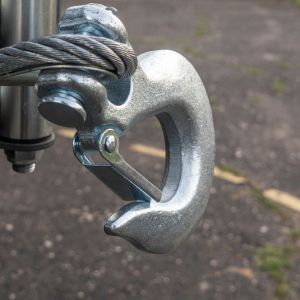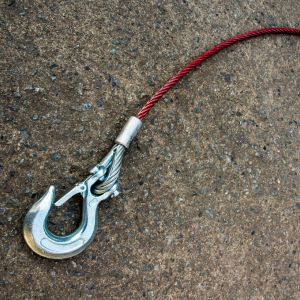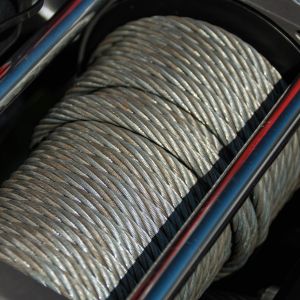The vehicles at times don’t move further because either they are stuck in the mud or get broken down in the middle of the road and at such times, we need external help to get our vehicles moving. Here comes the concept of winching in the light, the process of moving a vehicle with the help of chains, nylon slings or cable extension lengths from a location where a direct hookup for towing a vehicle is not possible is winching.
A winch is a tool which is used to pull or lift heavy loads and is used for towing vehicles. It works on an electric motor-driven gear to generate tension and power for the cable it uses for towing.
Using a winch to safely extract a stuck or disabled vehicle requires skill and experience. It is essential to make sure that the vehicle is properly prepared, the cable is properly routed, and the winch is operated slowly and carefully. It is possible to safely and successfully extract a stuck or disabled vehicle using a winch with the proper preparation and care.
What is winching?

Winching is the process of pulling or hauling a load using a mechanical device such as a winch. This procedure is typically used when the load had to be moved in a controlled manner but is too large or heavy to be moved manually. Winching can be done manually or powered, with hydraulics, electricity, or gasoline powering the winches.
The automotive, construction and forestry industries are the most common applications for winching, but they can also be used in other applications such as lifting heavy machinery or recovering a stranded vehicle. Winching can be done vertically or horizontally, and multiple winches and pulleys may be used to successfully and safely haul the load.
The process of winching

- Prepare the vehicle: The first step is to prepare the vehicle for towing using a winch to extract a stuck or disabled vehicle. This requires making sure that the vehicle is in park or neutral and that the parking brake is engaged. All occupants must exit the vehicle, and the wheels must be choked. You should then inspect the vehicle and the surrounding area to ensure that it is safe to tow.
- Connecting the winch cable: Next, connect the winch cable to the vehicle. The hook on one end of the cable on most winches should be connected to a secure point on the vehicle, such as a hitch. The cable should then be routed around any nearby obstacles, such as trees.
- Turn on the winch: The winch can be powered up once the cable is attached to the vehicle. This should be done slowly and carefully, as the winch may start pulling the vehicle unexpectedly if not properly controlled. To ensure that the vehicle is safely extracted, the winch should be set to a slow speed.
- Towing the vehicle: Finally, the vehicle can be towed using the winch. The winch should be powered until the vehicle is clear of the obstacle, then disengaged and the cable removed. After that, the vehicle should be towed to a safe location.
Uses of winching

Winching is a mechanical process that involves pulling or lifting heavy objects with a winch or a device that uses a cable or rope. It is widely used in a wide range of applications, including towing, lifting, and lowering. Winches are commonly used to pull or lift heavy objects such as automobiles, boats, logs, and construction materials.
Winching is used in the industrial industry to move heavy equipment or materials, as well as to lift and lower items from one location to another. It is used to lift, pull, and secure heavy loads in a variety of situations. It can be used to pull heavy machineries such as generators and conveyor belts. It can be used in the automotive and manufacturing industries to lift and secure loads.
In the automation industry:
Winching is commonly used in the automotive industry to extract a vehicle from a ditch or mud, to tow heavy loads, or move a vehicle out of a tight spot. Winching is also used in marine applications such as buoy pulling, boat towing, and anchor retrieval.
In the construction industry:
Winching is also useful in construction, such as raising and lowering frames, and in mining, such as hauling ore. Winching is also used to move large rocks and other objects in mining and construction.
Among other things, they can be used to move large rocks, pull stumps, and load gravel. Winching is also used to recover vehicles from mud or water, as well as to pull stuck vehicles out of snow or ice. Some winches are even used in the exploration and production of oil and gas. Winching is a useful tool for a wide range of applications, including automotive and industrial. It is used to aid in the movement of large, heavy items or materials.
Frequently Asked Questions
Q1. What does it mean to winch a vehicle?
Ans: The process of moving a vehicle with the help of chains, nylon slings or cable extension lengths from a location where a direct hookup for towing a vehicle is not possible is winching.
Q2. How do you release a stuck winch?
Ans. The most common cause of a stuck winch is rust or corrosion. To attempt to release the winch, perform the following steps:
- Turn off the winch’s power source.
- Spray a penetrating oil, such as WD-40, on the winch and let it sit for about 15 minutes.
- Pull the winch a few times to allow the oil to penetrate deeper into the mechanism.
- If the winch still does not move, try using a propane torch or a blow dryer to heat the area around the winch.
- Once the winch is free, use a lubricant, such as white lithium grease, to keep it from sticking again.
Q3. What is a winch in towing?
Ans. A winch is a tool that is used to pull or lift heavy loads and is used for towing vehicles. It works on an electric motor-driven gear to generate tension and power for the cable it uses for towing.
Q4. How do you use a winch step by step?
Ans. Following are the steps to use a winch:
- Prepare the vehicle
- Connecting the winch cable
- Turn on the winch
- Towing the vehicle

